_________________________________________________________________________________________________
BALLINGER BEACH:
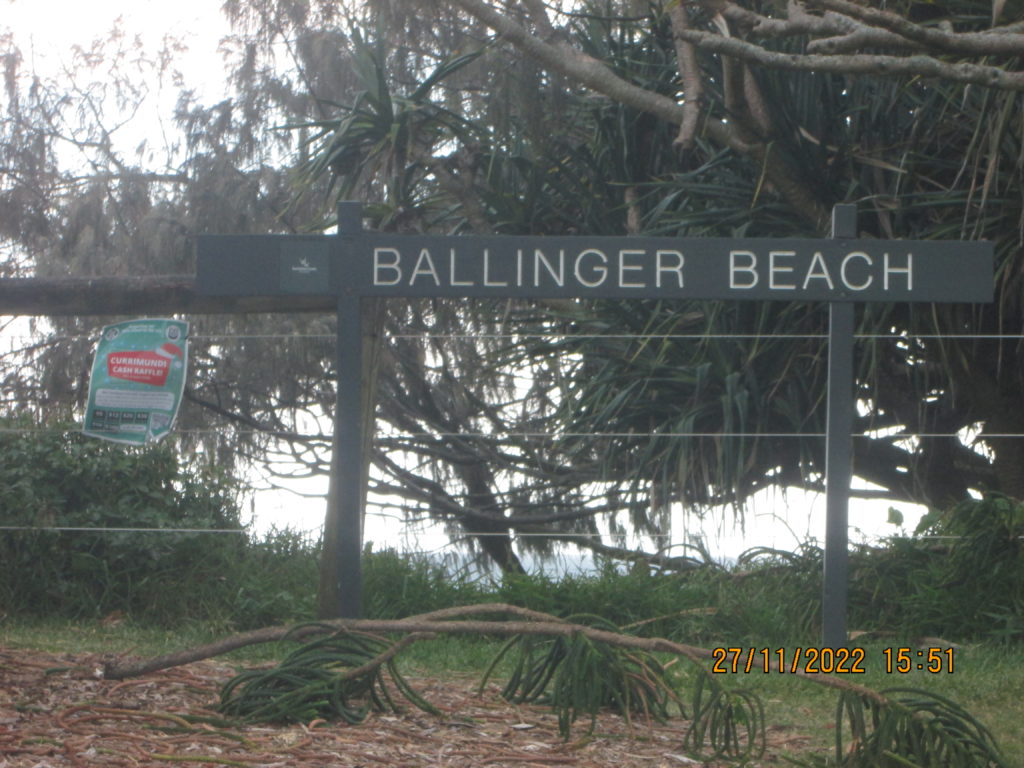
Ballinger Beach was one of many beaches around Caloundra. The beach was a very extensive sand beach with a gentle surf when we were there.
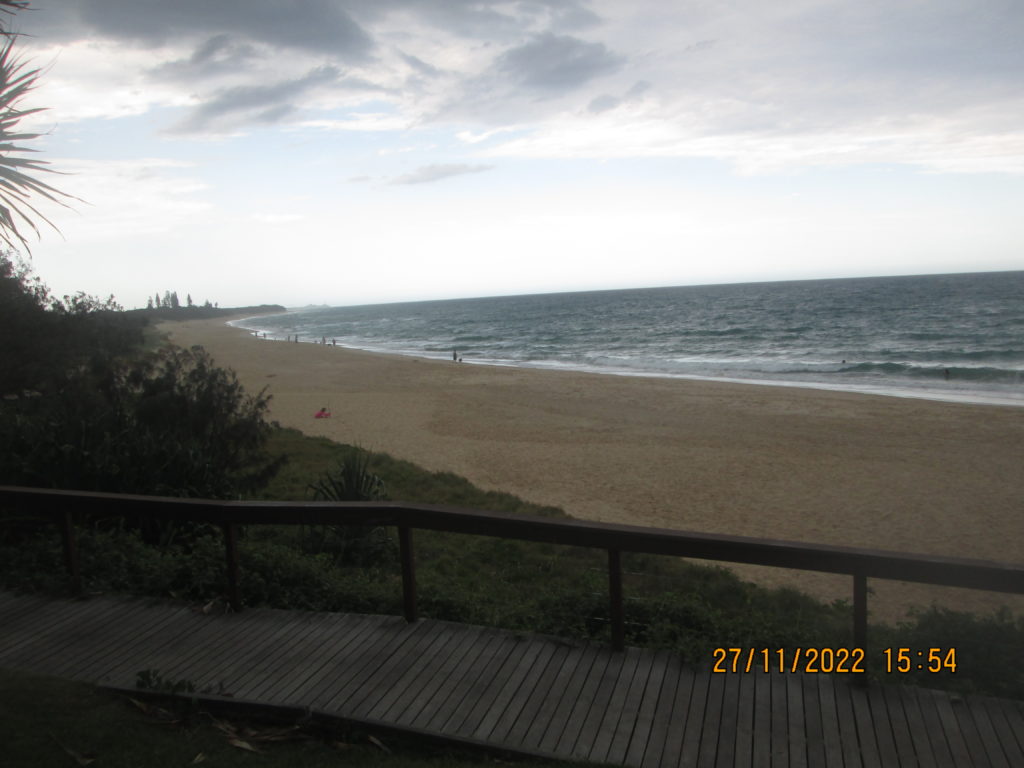
A timber board walk meant that you could go up to a viewing deck and survey the beach and the sea. That was if you didn’t want to down the sandy beach when had been raining and coming back with very sandy feet.
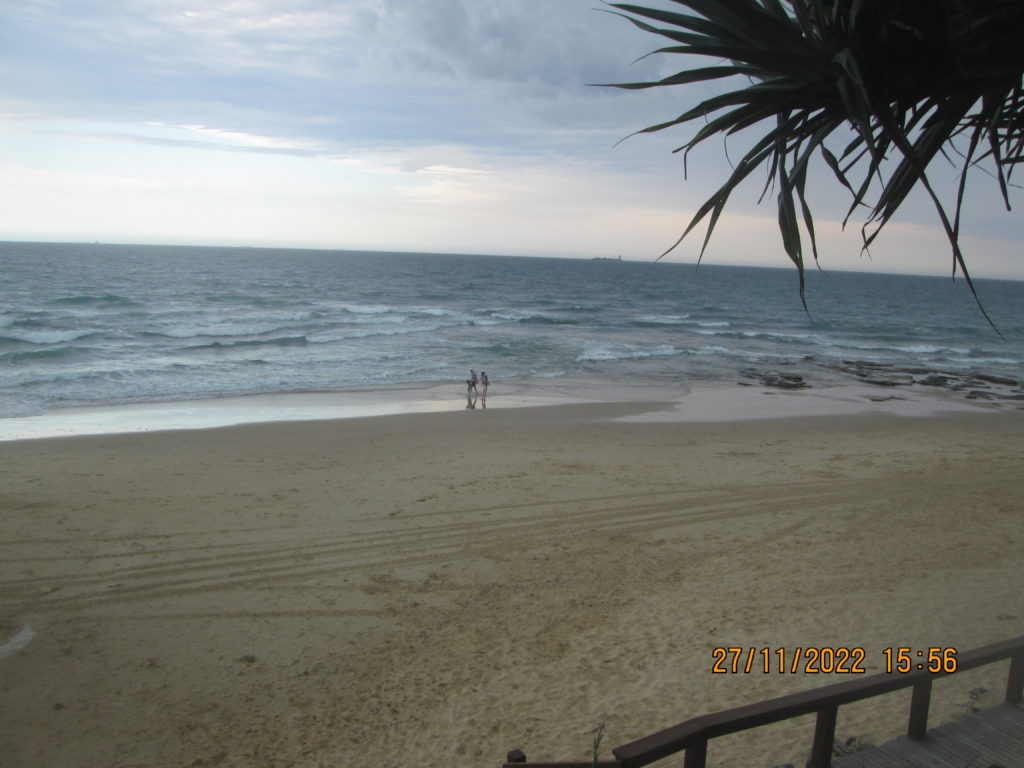
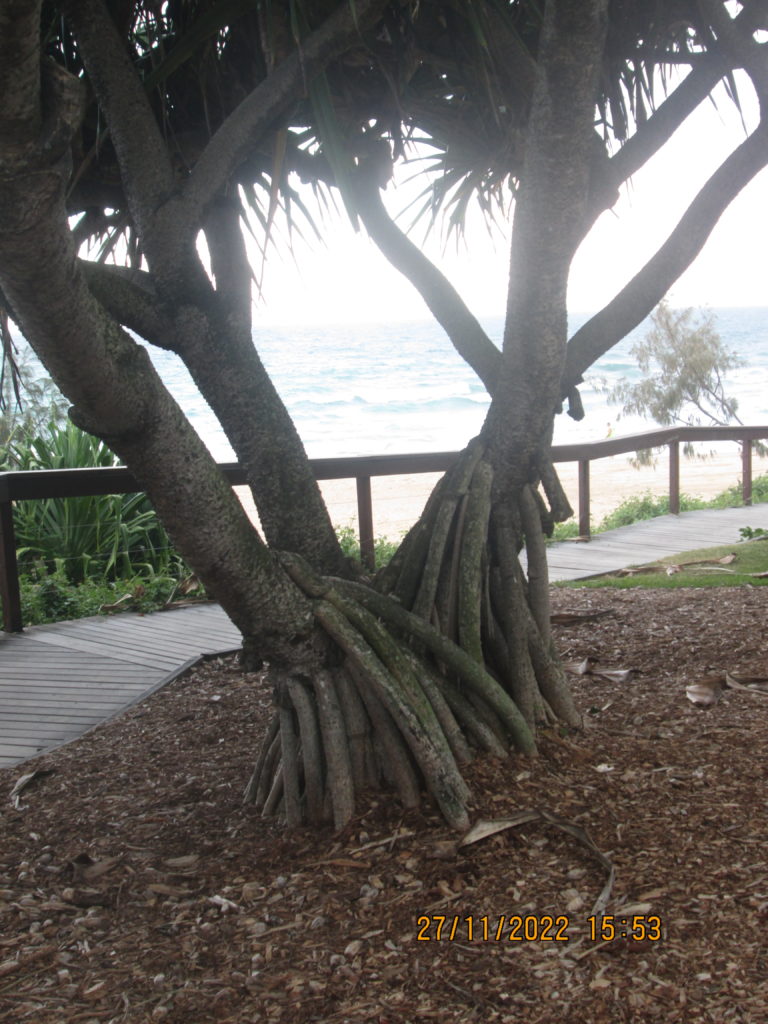
Pandanus tree: has very large external roots and look as though they supporting the tree which they are. The top of the plant has one or more crowns of strap-shaped leaves that may be spiny.
Often called pandanus palms, these plants are not closely related to palm trees. The species vary in size from small shrubs less than 1 metre (3+1⁄2 feet) tall, to medium-sized trees 20 m (66 ft) tall, typically with a broad canopy, heavy fruit, and moderate growth rate.[8] The trunk is stout, wide-branching, and ringed with many leaf scars.[9] Mature plants can have branches.[9] Depending on the species, the trunk can be smooth, rough, or warty.[10] The roots form a pyramidal tract to hold the trunk.[11] They commonly have many thick stilt roots near the base, which provide support as the tree grows top-heavy with leaves, fruit, and branches.[12] These roots are adventitious and often branched. The top of the plant has one or more crowns of strap-shaped leaves that may be spiny,[5][6] varying between species from 30 centimetres (12 inches) to 2 m (6+1⁄2 ft) or longer, and from 1.5 cm (5⁄8 in) up to 10 cm (4 in) broad.
They are dioecious, with male and female flowers produced on different plants. The flowers of the male tree are 2–3 cm (3⁄4–1+1⁄4 in) long and fragrant, surrounded by narrow, white bracts. The female tree produces flowers with round fruits that are also bract-surrounded. The individual fruit is a drupe, and these merge to varying degrees forming multiple fruit, a globule structure, 10–20 cm (4–8 in) in diameter and have many prism-like sections, resembling the fruit of the pineapple. Typically, the fruit changes from green to bright orange or red as it matures. The fruits can stay on the tree for more than 12 months.
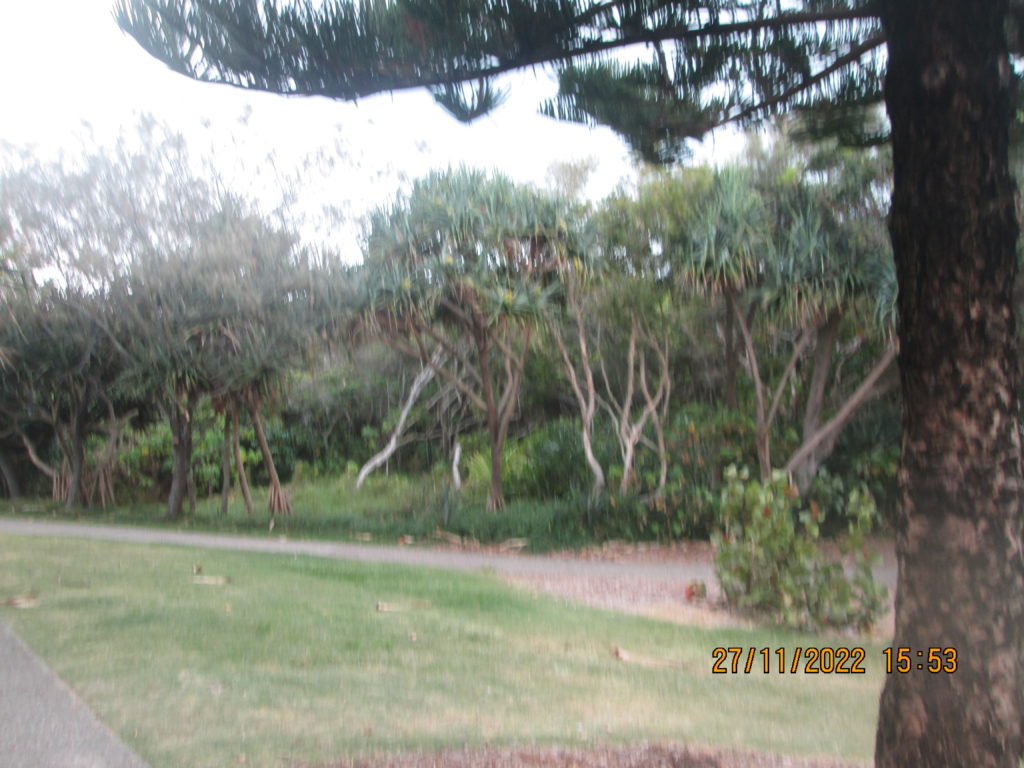
Thick coastal bush nearby has an outer edge of Pandanus tree and under story of thick coastal shrubs.
_______________________________________________________________________________________________________________
Scenic, fairly quiet Caloundra beach
Excellent boardwalk for a scenic stroll
Plenty of shaded areas, amenities nearby
One of the Sunshine Coast’s best dog beaches
A great, clean and wide – yet typically uncrowded – beach that remains fairly private despite its ease of access, Dicky Beach is a popular beach for tourists owing to the proximity of its nearby caravan park. Named after its namesake wreck of the SS Dicky that was formerly visible however recently removed for safety purposes, the beach offers plenty to recommend to help set it aside from some of Caloundra’s other beaches. Dicky Beach has an excellent boardwalk that spans its shoreline and makes for a wonderful, relaxed walk that extends all the way through to Caloundra proper, with plenty of shaded areas along the way in which to take shelter from the sun while soaking in some great beach views.
The beach is well-patrolled by diligent lifeguards and quite family-friendly as a result, however swimming between the flags comes highly recommended as it’s fairly prone to rips. Dicky Beach is also popular as an introductory surf spot, with waves that are manageable without being overwhelming and surf lessons available on the beach for those looking to book. It’s also one of the Sunshine Coast’s most dog-friendly beaches, with both on and off-leash sections ideal for those wanting to bring their canine friends along. Surrounding park areas round out the beach’s offerings, with plenty of greenery, barbecue facilities and ample parking as well as numerous local shops and cafes nearby. The beach’s surf club also provides some great value-for-money meals for those looking to dine on a budget.
Its skate park is exceptionally popular amongst teenagers, too.
________________________________________________________________________________________________________________
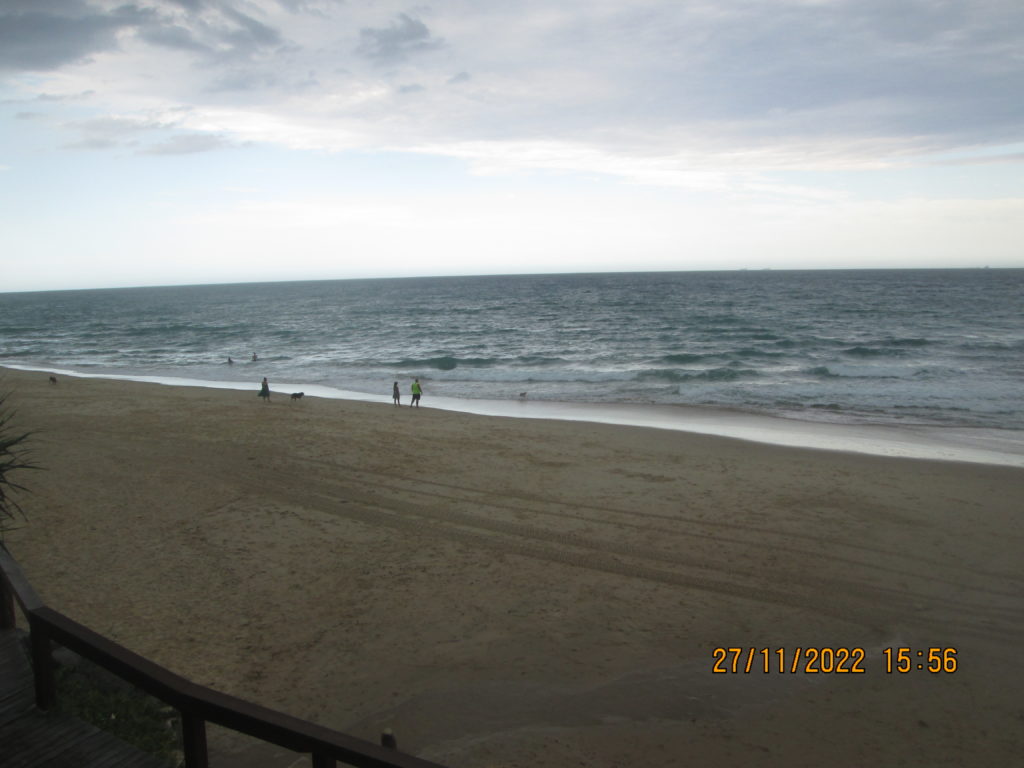
Dicky Beach is another quiet sandy Caloundra beach.
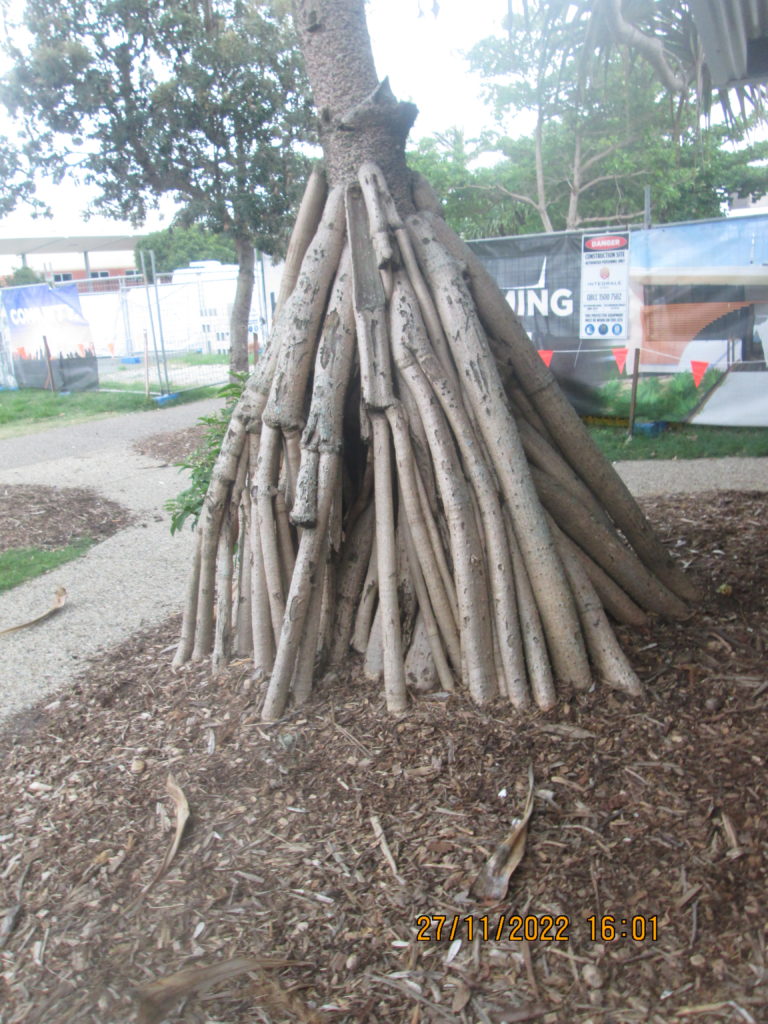
Pandanus tree: has very large external roots and look as though they supporting the tree which they are. The top of the plant has one or more crowns of strap-shaped leaves that may be spiny.
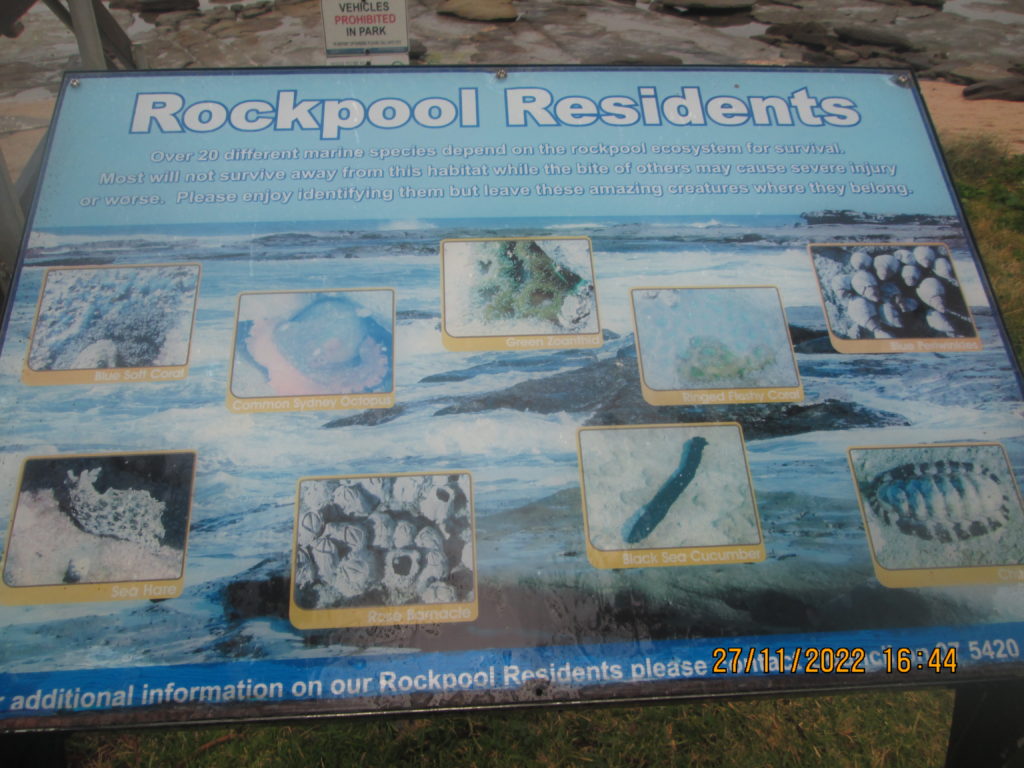
A sign on the rock pool residents. There is a large rocky beach with many rock pools out front. You can walk out on the rocky beach and discover the rock pool residents listed on this sign.
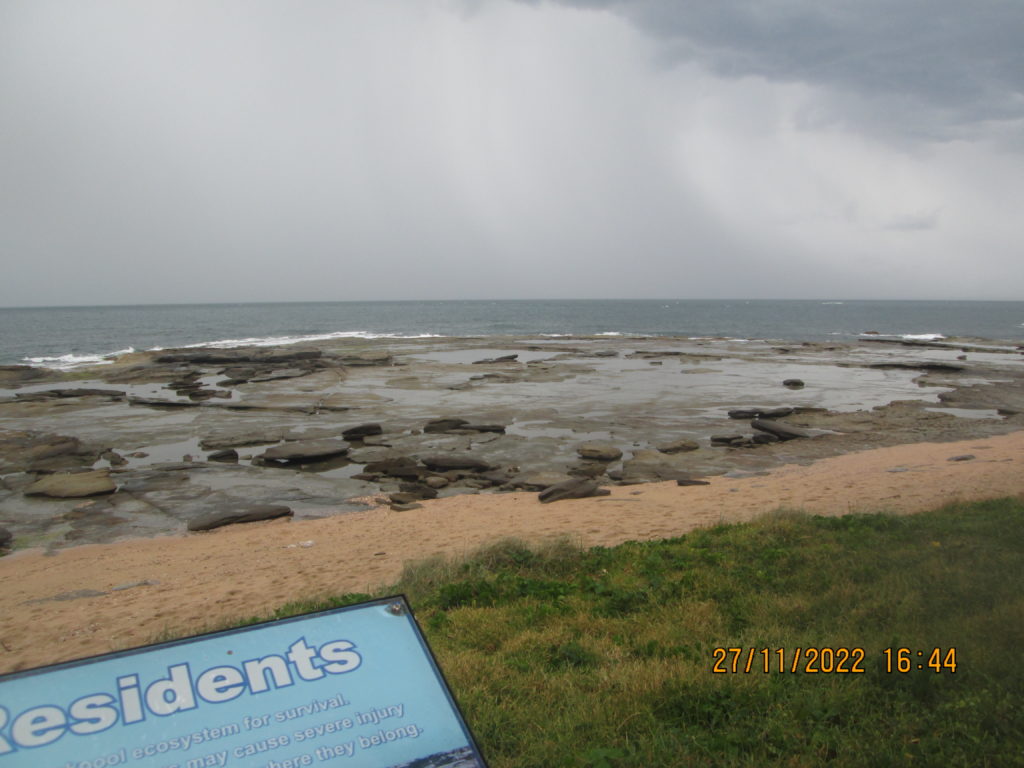
The large rocky beach with many rock pools out in front of the sign.
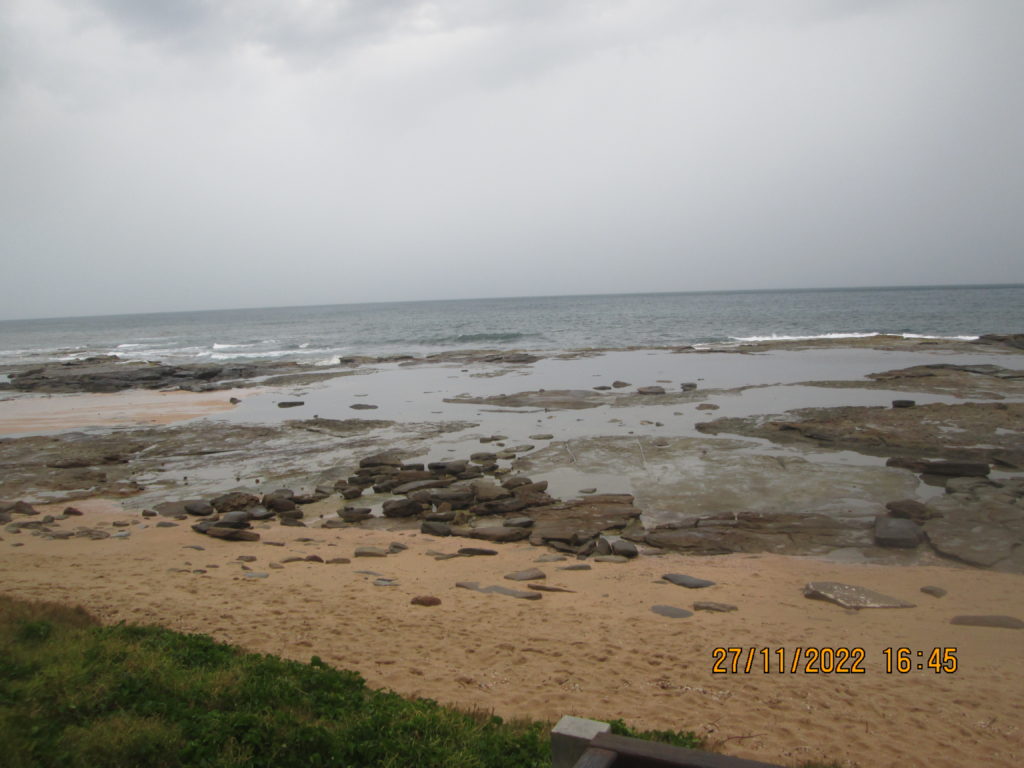
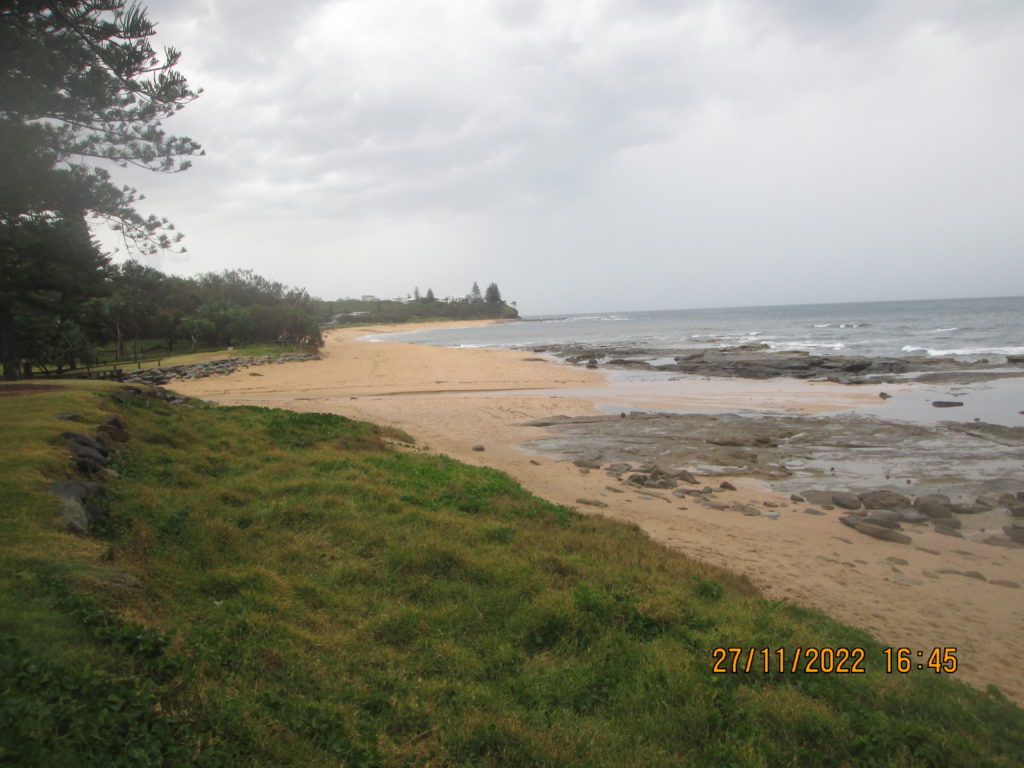
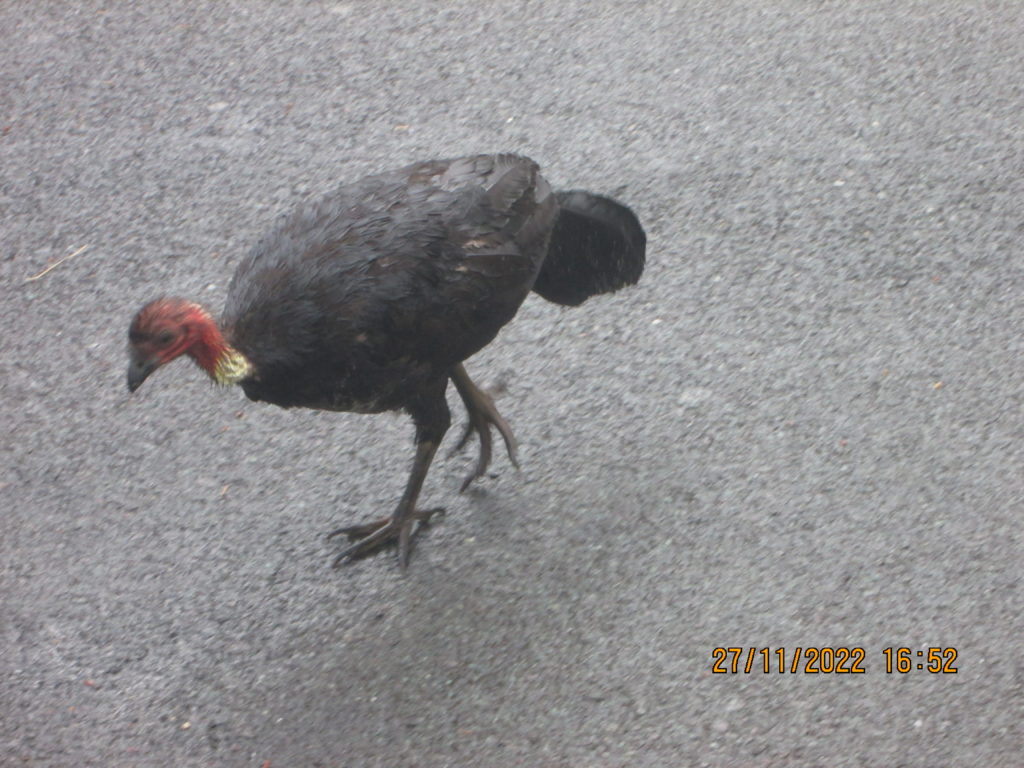
The Australian brushturkey or Australian brush-turkey or gweela (Alectura lathami), also frequently called the scrub turkey or bush turkey, is a common, widespread species of mound-building bird from the family Megapodiidae found in eastern Australia from Far North Queensland to Eurobodalla on the South Coast of New South Wales. The Australian brushturkey has also been introduced to Kangaroo Island in South Australia. It is the largest extant representative of the family Megapodiidae, and is one of three species to inhabit Australia.
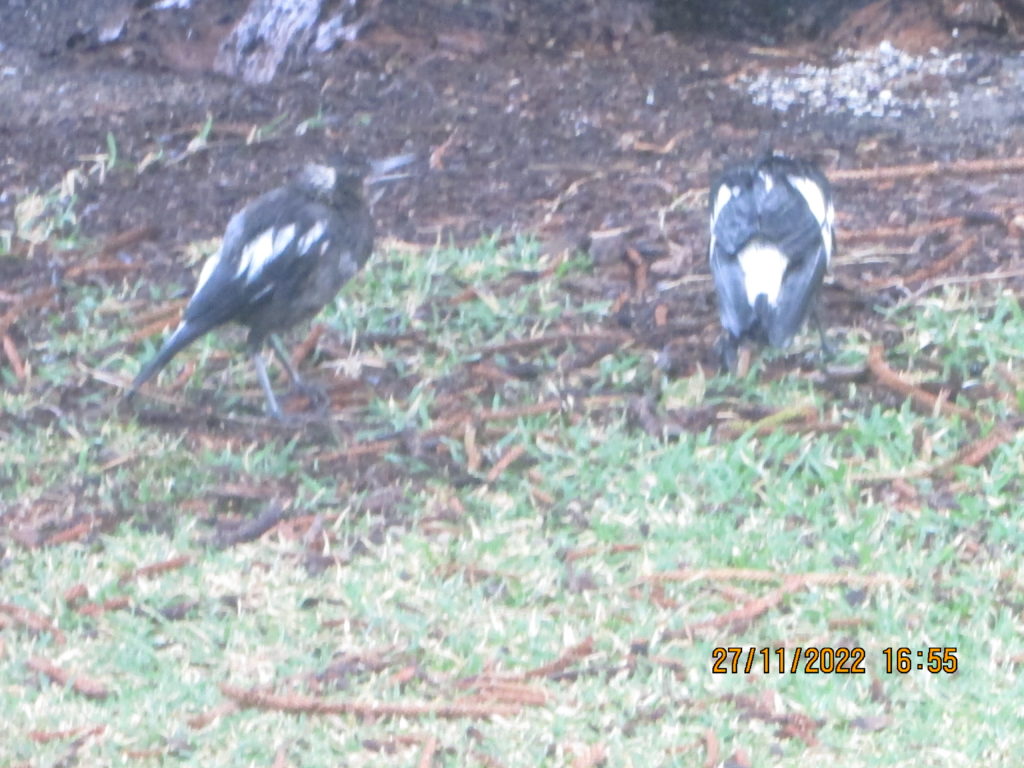
Magpies:
The bird on the left is a young magpie and the one on the right is an adult mother magpie. When the young magpie called out, the mother magpie would move over and feed the young one by regurgitating what it had been eating. It was quite interesting seeing the interaction between young and old.
Magpies are birds of the Corvidae family. Like other members of their family, they are widely considered to be intelligent creatures. The Eurasian magpie, for instance, is thought to rank among the world’s most intelligent creatures,[1][2] and is one of the few non-mammal species able to recognize itself in a mirror test.[3] They are particularly well known for their songs and were once popular as cagebirds. In addition to other members of the genus Pica, corvids considered as magpies are in the genera Cissa, Urocissa, and Cyanopica.
Magpies of the genus Pica are generally found in temperate regions of Europe, Asia, and western North America, with populations also present in Tibet and high-elevation areas of Kashmir. Magpies of the genus Cyanopica are found in East Asia and the Iberian Peninsula. The birds called magpies in Australia are, however, not related to the magpies in the rest of the world.[4]
Name
References dating back to Old English call the bird a “pie”, derived from Latin pica and cognate to French pie; this term has fallen out of use.[5] The tendency in previous centuries was to give birds common names, such as robin redbreast (which now is called the robin), jenny wren, etc. The magpie was originally variously maggie pie and mag pie.[6] The term “pica” for the human disorder involving a compulsive desire to eat items that are not food is borrowed from the Latin name of the magpie (Pica pica), for its reputed tendency to feed on miscellaneous things.[7]
________________________________________________________________________________________________________________
The Maroochy River is a river in South East Queensland, Australia. The river rises from the eastern slopes of the Blackall Range and flows east through Eumundi, before entering the sea at Cotton Tree, Maroochydore.[1] Other populated centres in the catchment include Nambour, Eudlo, Yandina and Coolum.
The suburb south of Airport and North of River and west of Motorway is known as Maroochy River.
________________________________________________________________________________________________________________
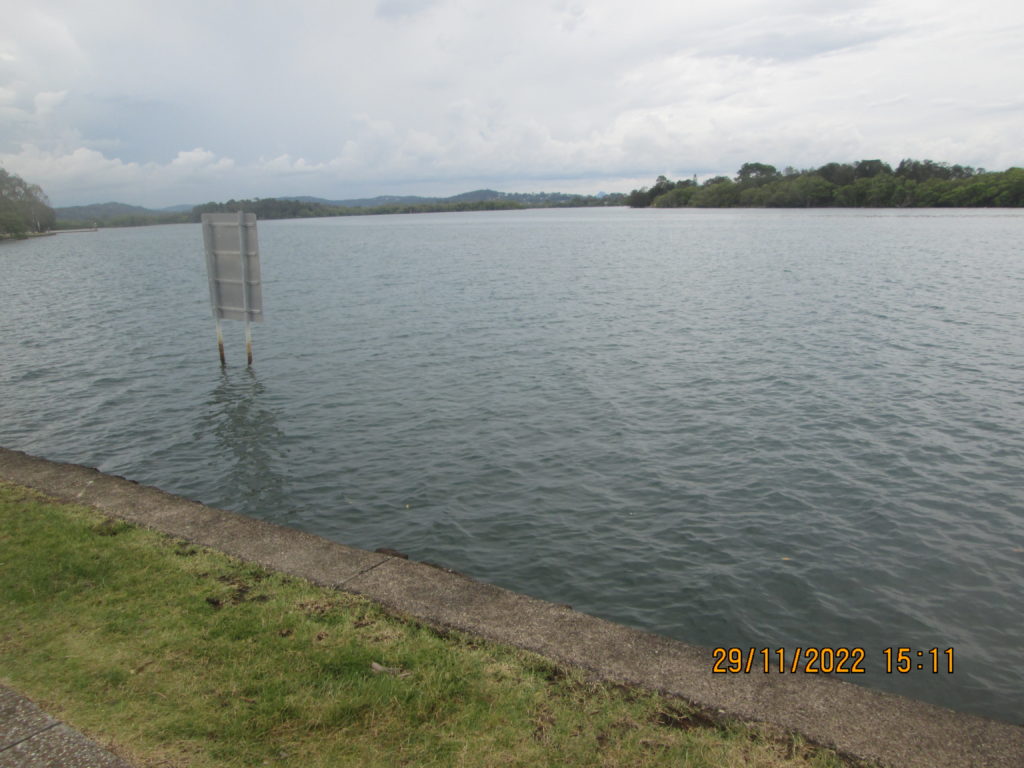
The wide spacious area of the Maroochy River
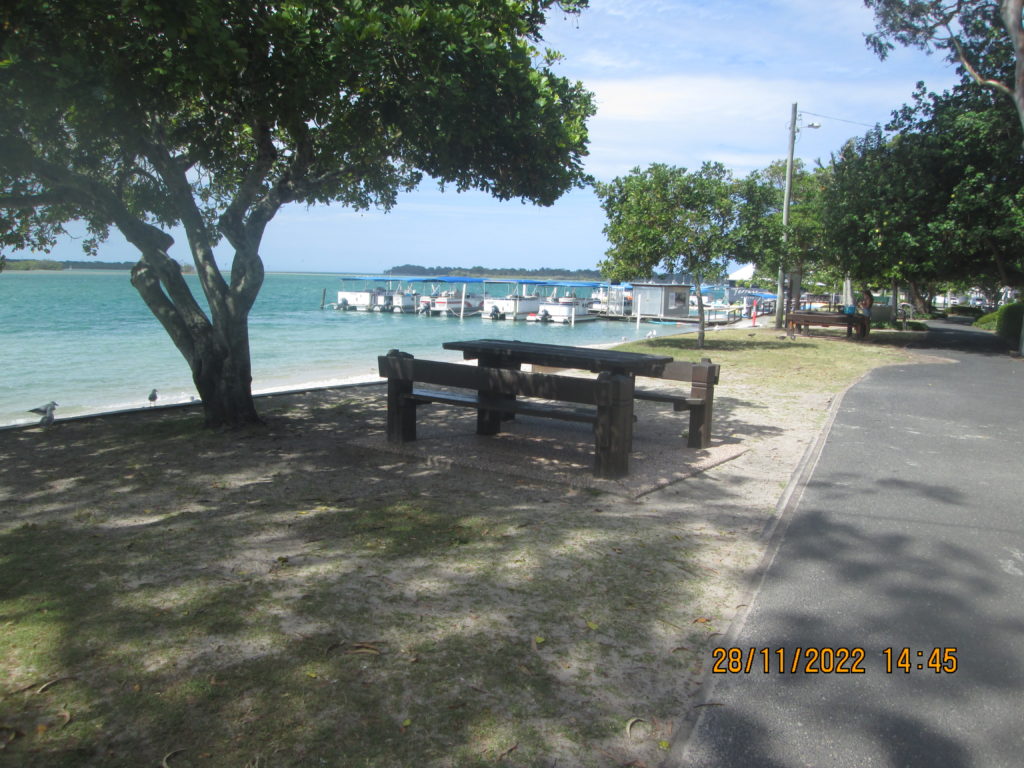
A picnic table near the water of the Maroochy River.
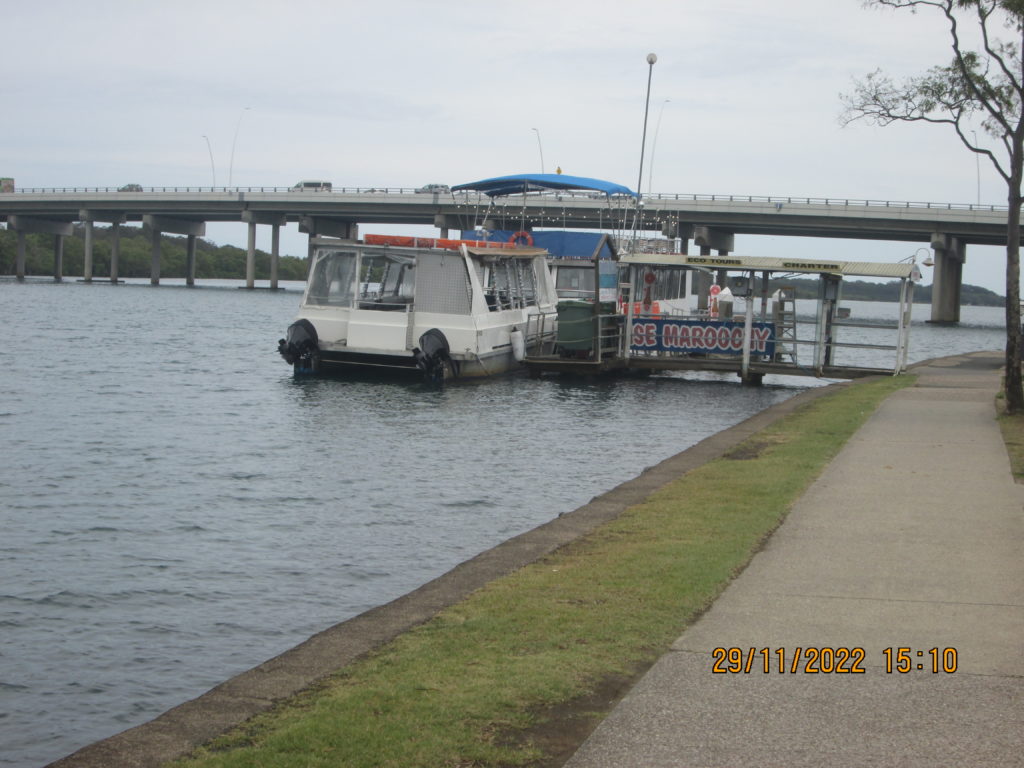
A boat used for boat trips up the Maroochy River.
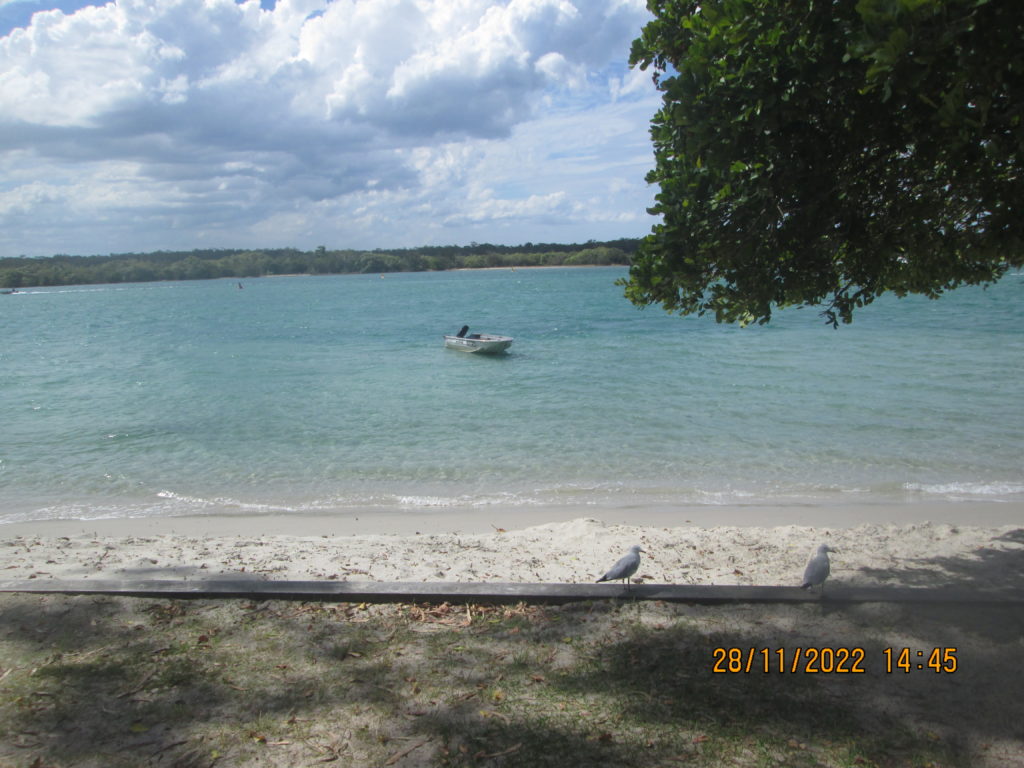
A little white sand beach and the changing aquamarine colour of the water as the tide comes in over the rising sand bank.
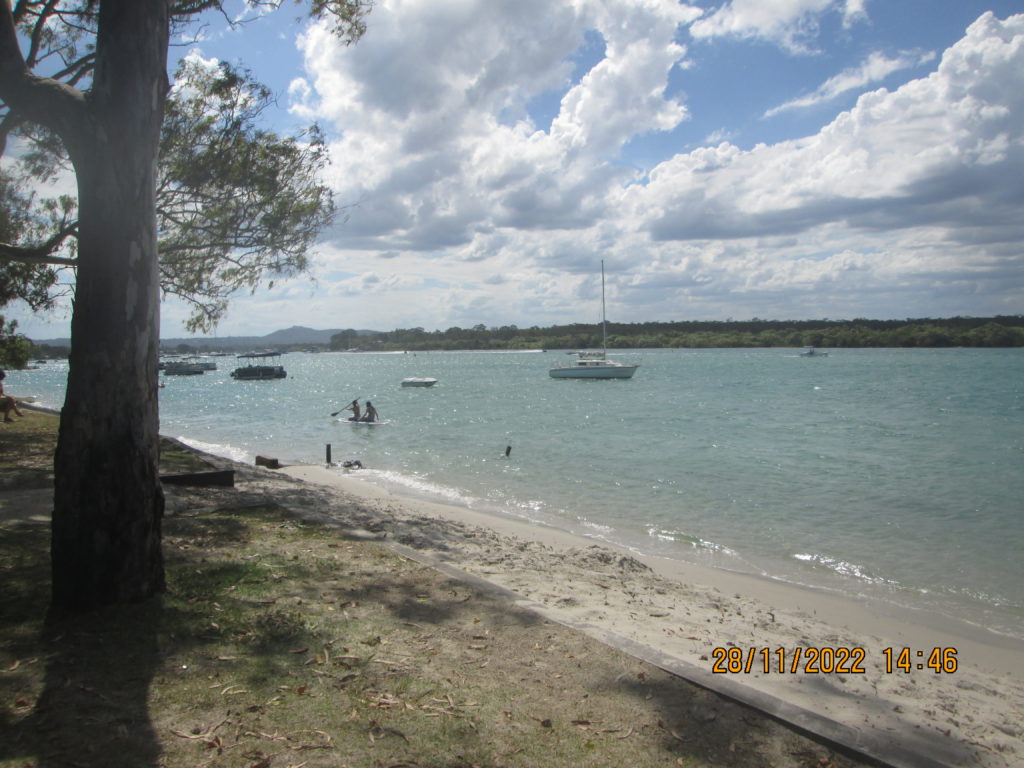
A placid section of the river looking up the river.
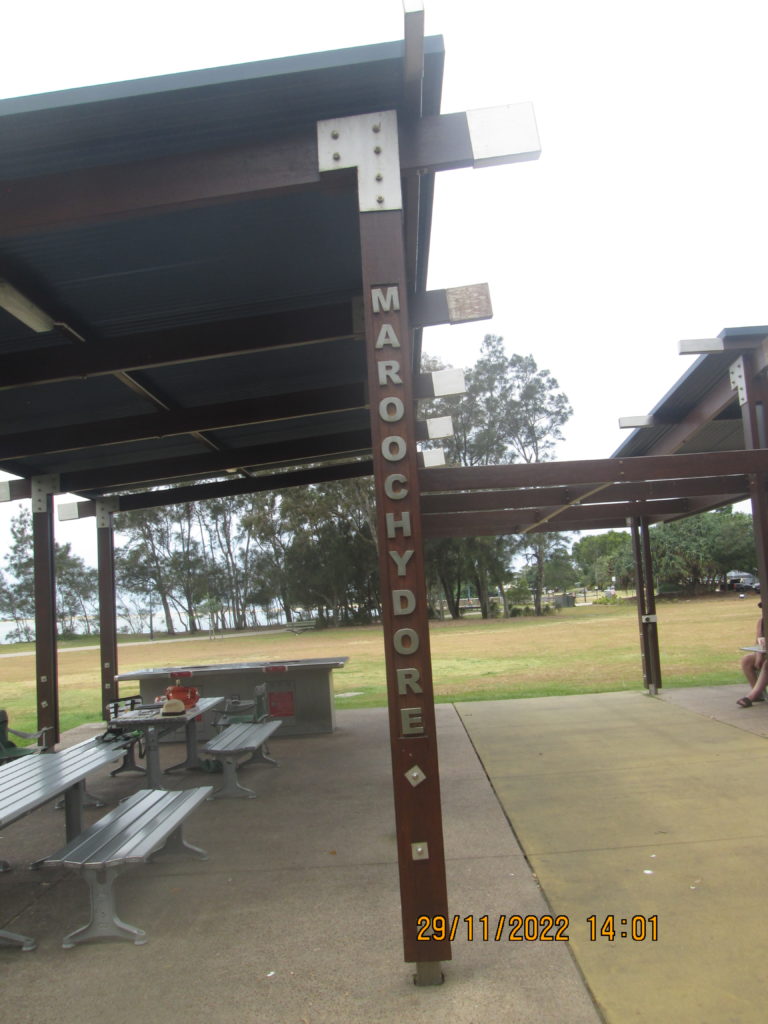
A lunch area on the river and Harriet eating lunch while I take photographs,.


A beautiful tree with yellow flowers. See the tree below.
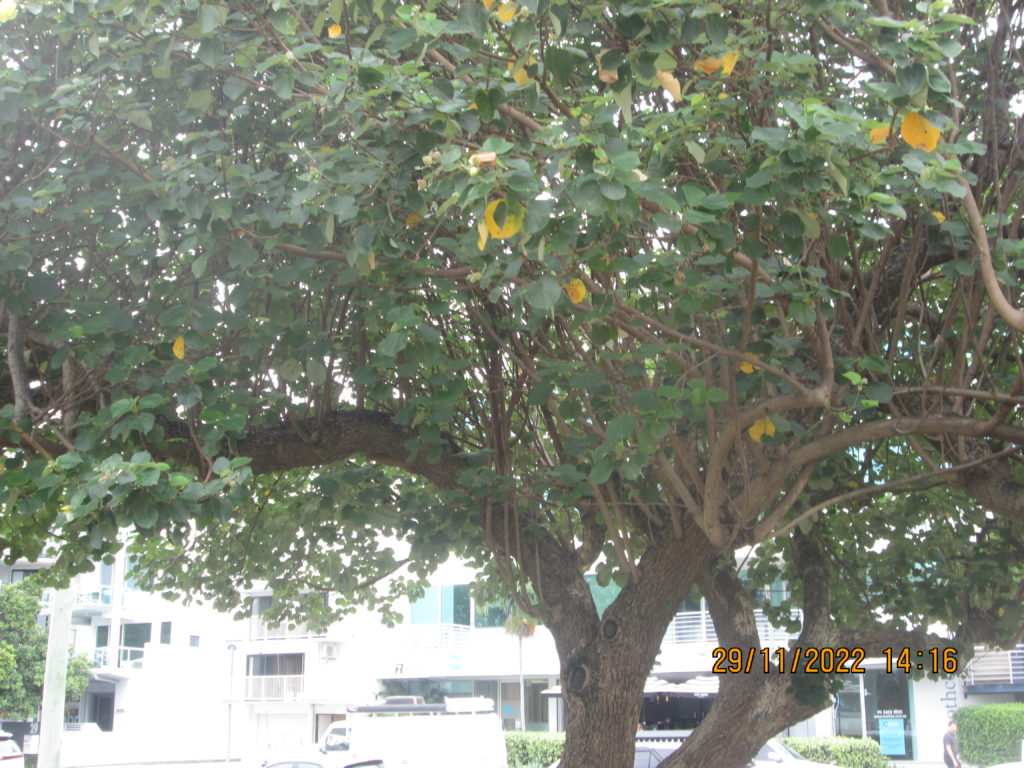
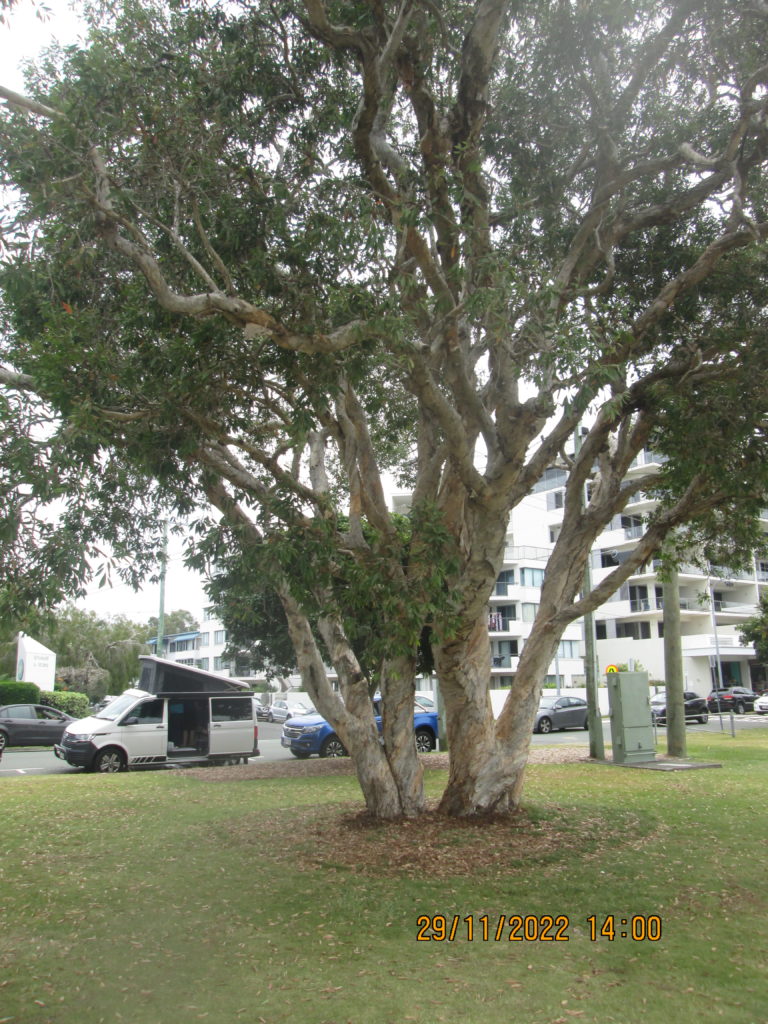
A paperbark (Meleuca quinquenervia): A medium sized to tall tree, growing from 8 to 25 metres tall and 5 to 10 metres wide, with lovely thick soft papery bark in cream to brown shades. The growth is spreading and makes a beautiful feature tree, and flowers with white bottlebrushes in late summer to autumn, attracting nectar eating wildlife. It withstands both very wet conditions and dryness, frost to -5, useful for windbreaks and as a street tree. Can be pruned to a single trunk or to a branching spreading tree. As it is a large plant, care needs to be taken as the root system could become a problem. The leaves can be used to make cineole-rich essential oil for various pharmaceutical uses, the bark was traditionally used for wrapping food for cooking, lining cradles, to stuff pillows and as emergency bandages. It naturally grows from Cape York Queensland to Sydney, also occurs in New Guinea and New Caledonia. It has been declared a noxious weed in 6 states of America where it has taken over some valuable ecosystems.
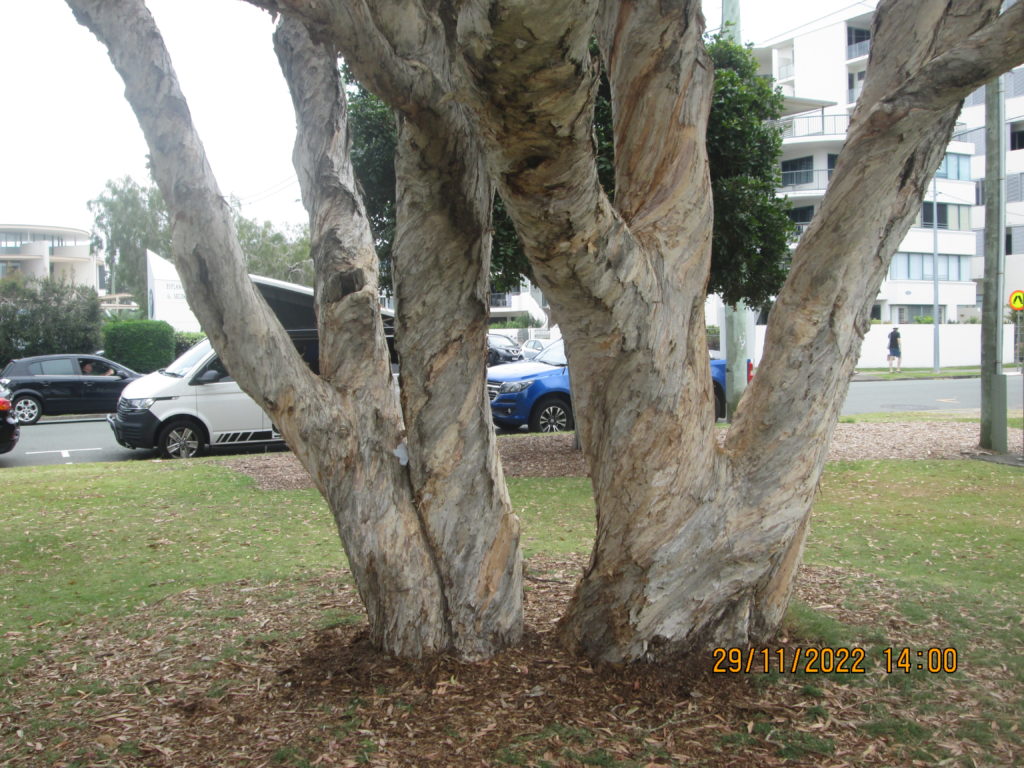
________________________________________________________________________________________________________________
The Coffee Area Mooloolaba Esplanade: We went to this Esplanade at the end of the day so there were few customers in the area.
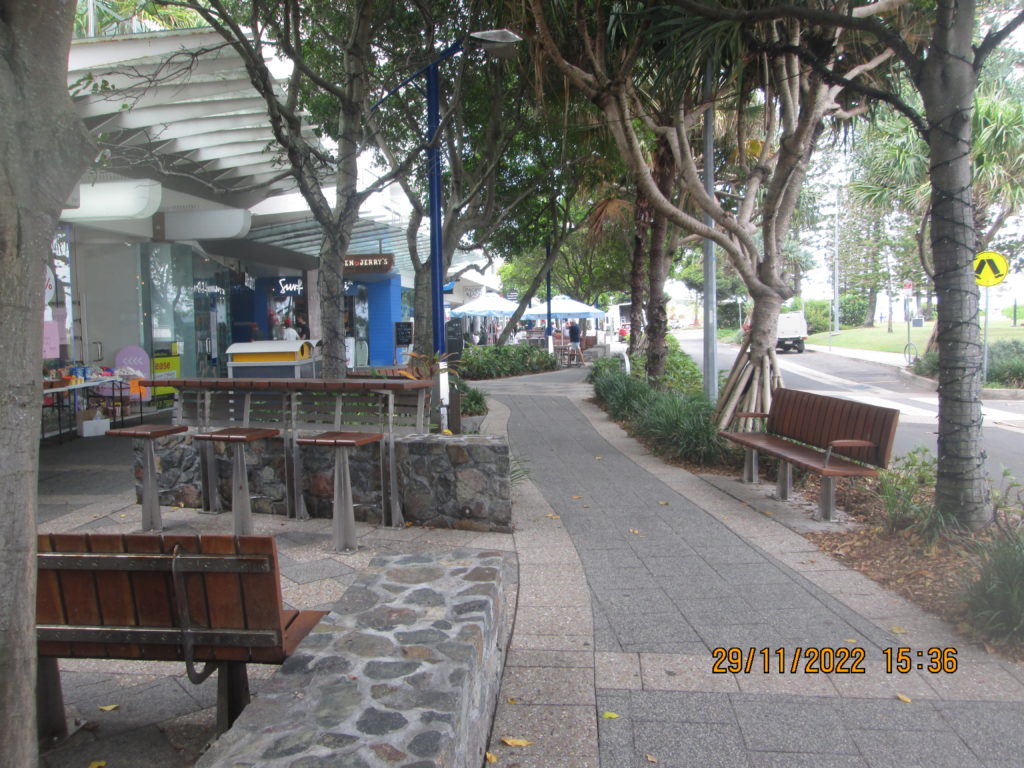
The approach into the coffee area.
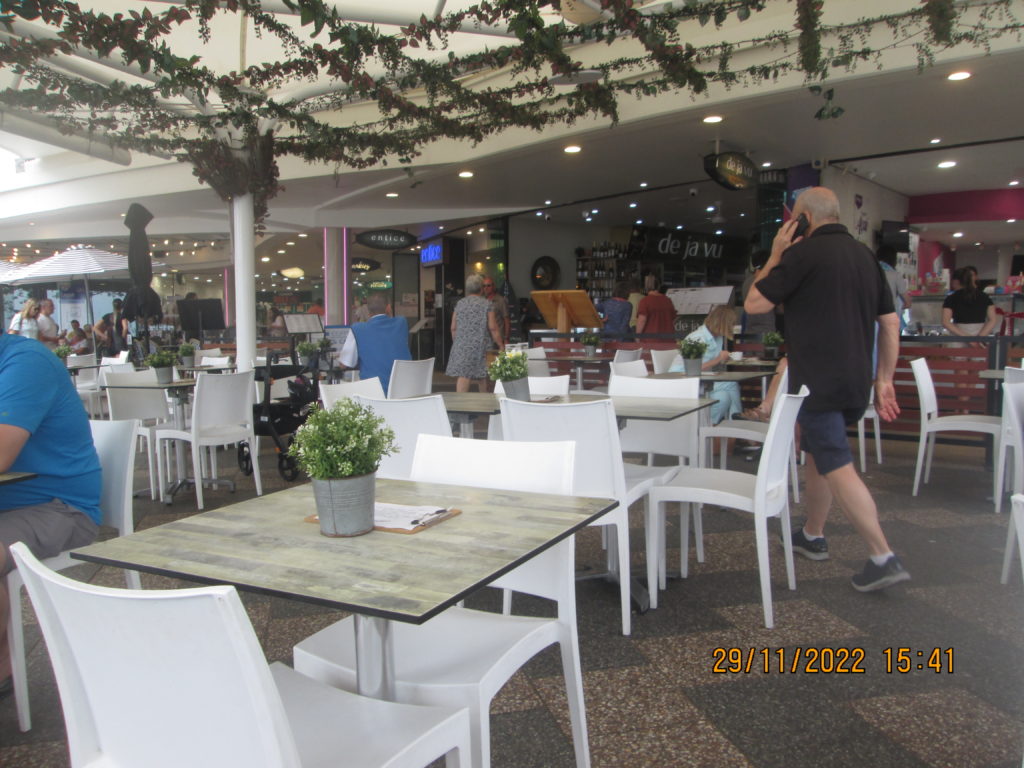
Inside the coffee area with all the tables and chairs.
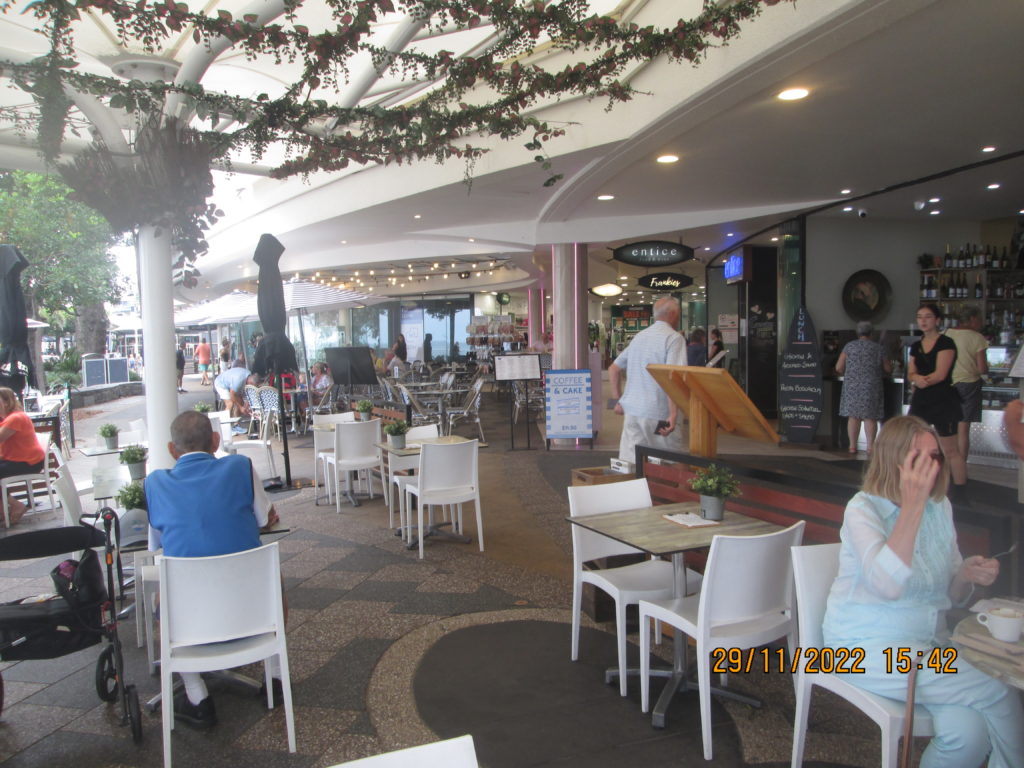
Photograph 2: Inside the coffee area with all the tables and chairs. It was the end of the day so there were few customers in the area.
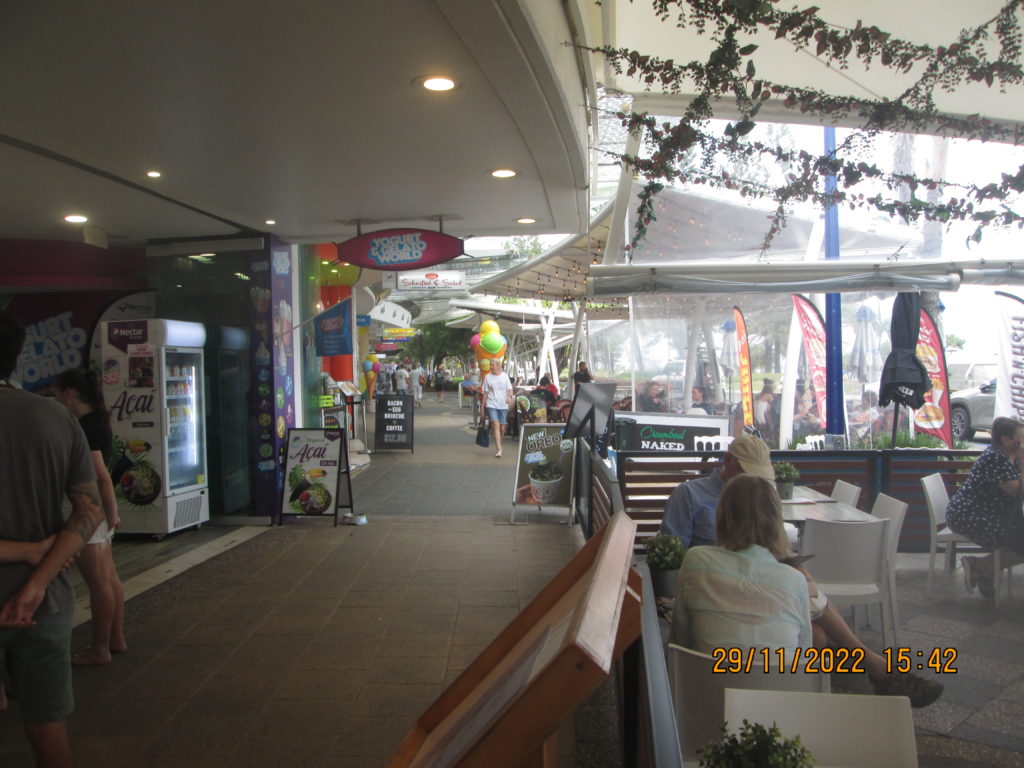
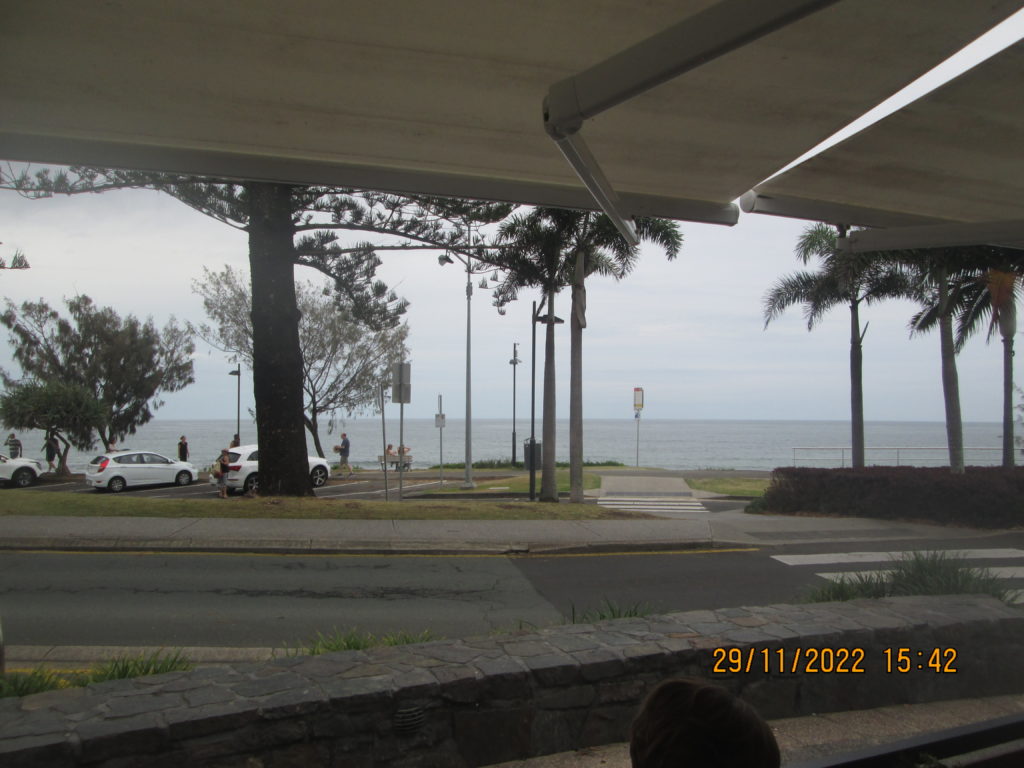
The coffee area looked out the open ocean across the road.
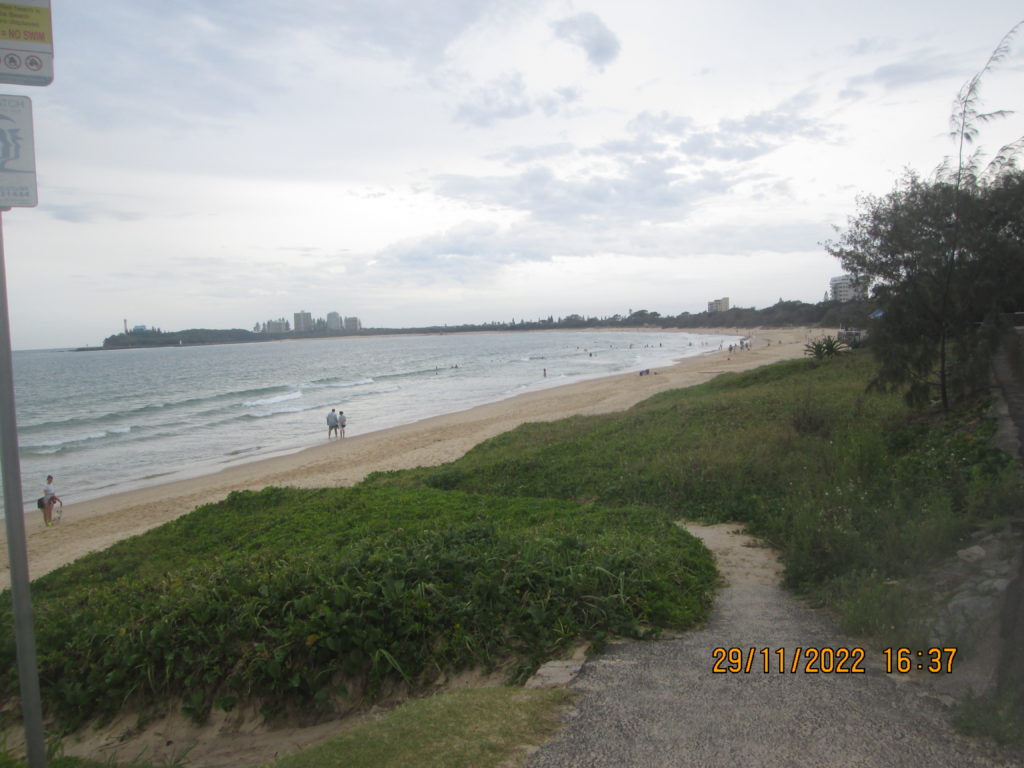
The open ocean when you cross the road.
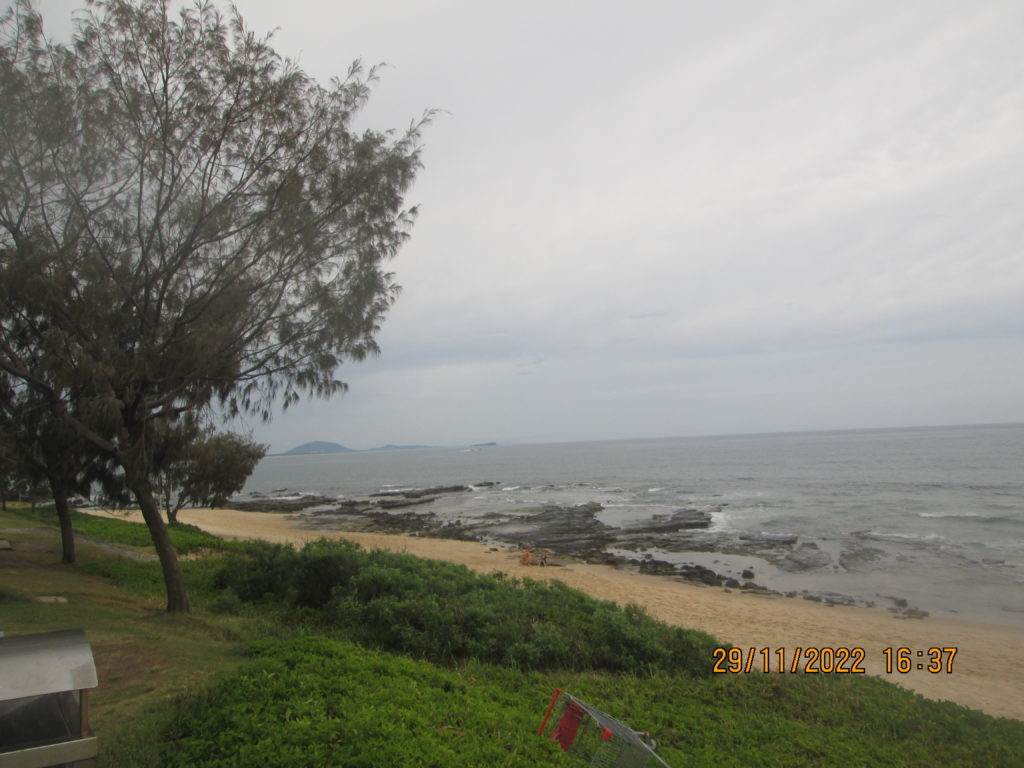
To the north of the sandy beach is an exposed rocky beach.
________________________________________________________________________________________________________________
